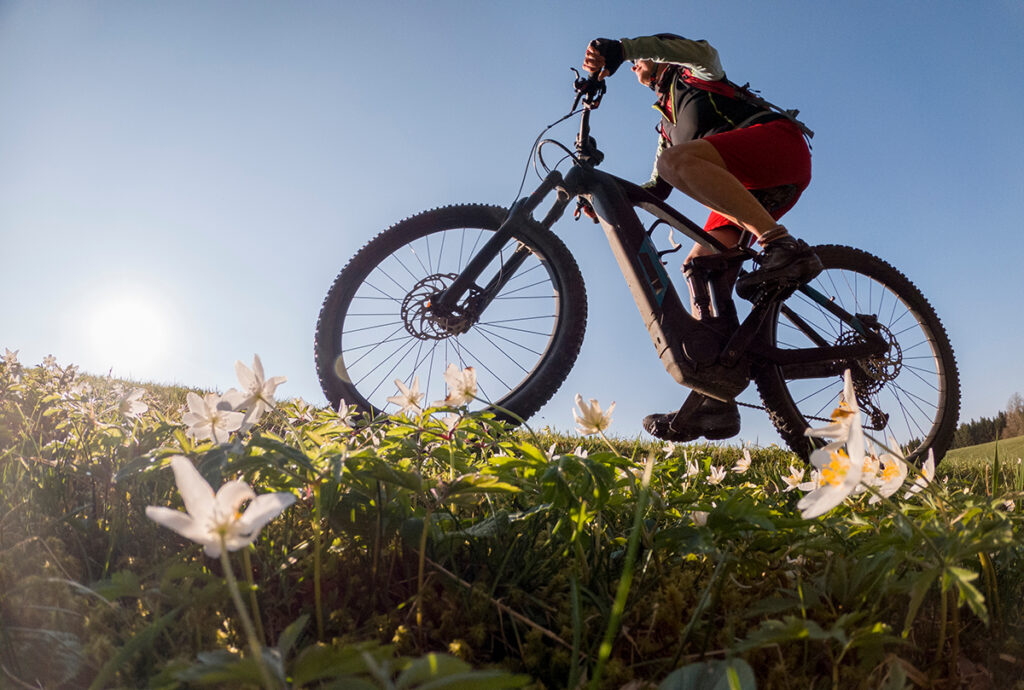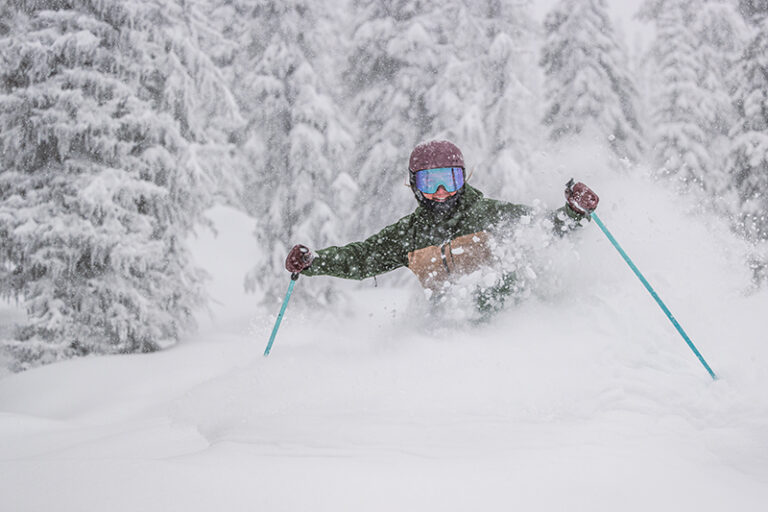By Justin Skay
One summer day soon, you or me’ll be grinding up Beacon or Iller Creek, or maybe slipping up the pea gravel on Five Minute Hill or Trail 140, moondust pooling in streaks of sweat from overwrought body parts raw with the sandpaper sting of third-degree chafe. Over the dusty rasp of labored inhalations will come the sunny chirp of a fellow rider interrupting his offkey rendition of “Bicycle Race” to yodel “On your left!” Absent audible groaning, grunting, or popping of knees, but maybe a soft button click, with the white-noise whir of an electric motor he’ll glide by mid-verse. He may be wearing boat shoes.
Cycling changes society. Women gained more independence from the invention of the bicycle than anything, to paraphrase Susan B. Anthony. Riding a “wheel” meant they could escape the stuffy confines of homebound man-dependence; cycling required even women riders wear pants, much to the ire of stodgy proponents of convention, men who deemed bloomers an effrontery to Victorian cultural norms. Adaptation continues rife with growing pains, in part because the pants have shrunk.
From bloomers to Spandex, penny-farthings to carbon fiber, the cycling industry is fickle as a feather in the wind, though recent bouts of déjà vu evoke its cyclic nature. The first patent for an electric bicycle was approved in the U.S. in 1895. Batteries were cumbersome, charging nowhere, and the car, backed by Big Oil, rose handily to dominance. Forced into the backseat, electrically assisted cycles never completely disappeared, and are currently enjoying a comeback, with U.S. sales up about 270% since 2019, topping one million last year, largely due to improvements in battery technology.

The E-Bike Boom
Who’s buying all these bikes? According to Cycling Industry News, the vast majority are sold to those 45 and older. These are people who want to commute to work without getting too sweaty, or run errands in a more environmentally conscious way than a singly occupied car. Or they’re retired and want a fun way to get to town without packing up their RV. A husband who couldn’t keep up with his wife before buying an e-bike. A war-wounded veteran with chronic back pain. Anyone, really, who wants to ride farther, keep up with friends, or see more trails.
Avid pedaller and peddler of e-bikes himself, Scott Willegalle, co-owner of Spokane’s North Division Bicycle Shop, says during his 38 years in the cycling industry he’s watched lower gear ratios expand access to more riders who ride more miles. But you can only spin so fast before you fall over.
“The e-bike is the new low gear. It’s easier to climb hills. You’re going to increase your distance by a third. The amount of riding you can do volume-wise on an e-bike means you will be less fatigued than riding the same distance on a regular bike,” Willegalle touts.
E-bike Backlash
Speed differential while sharing trails has also stirred contention among conventional cyclists. In part, that’s because they tend to be purists by nature and nurture competitiveness. That guy in the boat shoes is riding more miles than me.
Willegalle responds: “People who don’t have e-bikes are just jealous,” he says, while acknowledging that some people can’t afford them. “The whole thing about people being pissy about e-bikes is that they don’t have one.”
While no doubt true for some, lack of clarity or outright flouting of rules foments indignation as well. For their part, administrators of public lands where e-bike use is permitted should provide ample clear signage, educate the riding public in posts and through outreach events, and enforce rules more strictly on public lands. Riders should know where their class of bike is allowed, and adhere to speed and use prioritization.
Know Where You Can Ride Different Types of E-bikes
Class 1 e-bikes are strictly pedal-assisted up to 20 mph. Class 2 e-bikes have an optional throttle-only mode, and are also restricted to 20 mph. Class 3 e-bikes utilize pedal assistance up to 28 mph, and may have throttle assistance (without pedaling) up to 20 mph. Around the Inland Northwest, there are a lot of different rules and levels of enforcement depending on where you plan to ride an e-bike.
Currently, according to Washington State Parks, class 1 and 3 e-bikes are allowed on long-distance trails like the Columbia Plateau and Palouse to Cascades trails, as well as the Centennial Trail in Spokane. Those same classes are also allowed on roads within state parks, and on natural surface trails that allow bicycle use like the trail systems at Riverside State Park and Mount Spokane. Class 2 bikes are not permitted on trails in those state parks but are allowed on the same roads that cars can drive on.
On Spokane Parks and Recreation trails popular with mountain bikers, such as Beacon Hill’s 50-ish miles of singletrack and trails on the High Drive Bluff and at Indian Canyon/Palisades, the situation is less clear. According to city staff, e-bike use is similar to that seen on Washington State Parks trails, although there are currently no rules regarding the use of e-bikes on city park lands. Clarifying e-bike policy for city park trails and properties, however, is reportedly in the works.
Spokane County conservation areas that sport popular hiking and singletrack bike trails, such as Iller Creek and Liberty Lake Regional Park, may also soon see clearer rules regarding e-bike use. While e-bikes of any kind are not currently allowed on any non-motorized Spokane County trails, the county is looking at that policy and planning is forthcoming that may make some clarifications and adjustments to existing e-bike rules.
With the varying e-bike rules and lack of signage and enforcement on many Spokane-area trails, local trail users report widespread pedal-assist e-bike use that seems to create little to no conflict with their “acoustic” bike counterparts. Throttle e-bikes, which are effectively electric motorcycles that can speed up and down trails at high speeds without requiring pedaling, are also on the rise, and pose more of a threat of increased user conflict, injuries and liability concerns.
Across the border on Idaho State Parks trails popular with mountain bikers, like those at Farragut State Park and pathways frequented by cyclists and walkers like the Trail of the Coeur d’Alenes and North Idaho Centennial Trail, class 1 and 2 e-bikes are allowed, although speed limits are in effect on some trails. E-bike rules may vary a bit on some of the trails around Sandpoint, like the Syringa trail system, that have a dual conservation and recreation purpose, so do your research before heading out on an e-bike spin.
On U.S. Forest Service non-motorized trails in Washington and Idaho, e-bikes of any kind are not currently allowed, although they can be ridden on any trails or roads open to motorized travel, and enforcement of restrictions are scant. E-bikes are allowed on many federal BLM lands and trails as well as on many bike-friendly National Park pathways, but check before riding.
E-bikes Are Here to Stay
Even as regulations change, there is no doubt the e-bike will remain an outdoor recreation fixture for the foreseeable future. “They’ve opened the Pandora’s box of e-bikes, and you aren’t going to close it,” Willegalle rightly predicts with the self-satisfied smirk of the true believer. If you want to ride more miles, keep up with your friends, and “fear no hills or headwinds,” he can make you one too.
Justin Skay recently found out firsthand e-bikes are fun, and already has friends he can’t keep up with, so his electric revolution might be just around the next bend.













